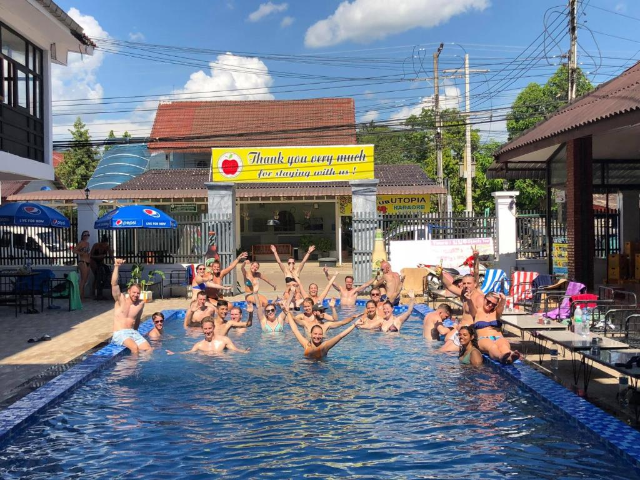
-
The Sad Truth About The So-Called Eco-Estate You Live In
23 Oct 2017 by Jasmine Stone in Environment, Lifestyle, Partners, Rhino Wood, South Africa
Most of us are trying to do what we can with regards our environmental footprint and the like, and maybe that’s why eco-estates and the lifestyle they purport to offer are proving so popular.
Great idea, but are you really getting closer to nature and helping to preserve our country’s flora and fauna?
According to Andrew Amoils, head of research at New World Wealth, South Africa is one of the global pioneers in residential estate living. In fact, the only country with more residential estates than South Africa is the US.
It’s not just about security (although that’s certainly a factor), because it’s also about spaciousness and taking advantage of South Africa’s natural beauty.
Add to that how estate living often provides a sense of community and hey, you have a winning recipe. Here’s where you might be duped, though – whilst the developer promises on golf and wildlife estates are clearly defined when it comes to certain parameters, they are less obvious when it comes to what makes them ‘eco-estates’.
In her thesis, Buying Into Residential Eco-Estates: Perception And Reality Of “Green Living” In Eco-Estates In Gauteng, Roselle D. Sherriff-Shüping indicates that the development of residential eco-estates has less to do with the sustainability of nature, and more with a desire to increase profits.
She argues that a number of eco-estates use ‘greenwashing’ methods to attract potential homeowners, attracting homeowners who may be interested in protecting the environment.
Capitalism being dishonest – never.
So what is an eco-estate, what values should underpin the lifestyle, and what are the criteria against which they should be measured?
Firstly, eco-estates should have as little impact on the development site as possible. This means sustainable design, empathetic architecture and minimal landscaping that incorporate natural colours and textures, locally sourced materials, and eco-friendly structural elements that complement the estate setting.
In addition, environmentally sensitive construction techniques, energy efficiency, rainwater harvesting, and thoughtful indigenous landscaping should form part of the criteria framework to further minimise the development’s carbon footprint.
Timber has long been valued as a renewable, recyclable natural resource that is also beautiful and versatile, and that remains true today. Sustainable timber allows an architect to add a touch of nature to any man-made structure, and a softness to the design.
Apart from its aesthetic value, timber also has incredible construction characteristics, which are becoming increasingly utilised through the development of different timber technologies.
Forward-thinking companies such as sustainable, environmentally-friendly Rhino Wood (created through an innovative patented process that gives softwoods, like South African pine, similar and at times even enhanced characteristics of the most durable and rarest hardwoods) have allowed timber to be used as an energy conserving construction material, because it requires far less energy to produce than in-organic materials like steel and glass.
So here’s a little heads up to those developers looking to cash in on the eco-estate vibe – we’re watching.
Sustainably grown and sourced timber and building materials should be every developer, architect and home owner’s choice when having to comply with green building requirements.
Rhino Wood are leading that field, being locally sourced, stable and durable, and requiring virtually no maintenance. In fact, it naturally develops an attractive grey patina to effortlessly blend into the surrounding landscape.
Their wood is suited to both indoor and outdoor applications which include decking, seating, pergolas, screens and cladding.
Here’s a handy guide to what Rhino Wood is all about, and why it’s important that we all get on board with a more sustainable approach to building:

Latest News
-
Nick Frischke’s Family Hopes Hopes Green Monkeys Can Help Find Him
[imagesource:Missing Nick Frischke /Facebook The mother of missing German tourist Nick ...
-
A Bitcoin Millionaire Hid $2 Million In Treasures Across The US And Left A Book Of Clues For How To Find Them
[imagesource: Jon Collins-Black's Treasure / Facebook] Hidden treasures worth more than...
-
Suspected Methanol Poisoning Claims Six Lives At Laos Backpacker Hotspot
[imagesource:booking.com] A total of six foreign tourists have died after allegedly con...
-
Monday Morning Spice
[imagesource:forum] Matric Exams: Errors In Questions Worth 79 Ma...
-
Powerful South African Short Film ‘The Last Ranger’ Scoops Up Awards And International Praise
[imagesource: Cindy Lee Director/Facebook] A compelling South African short film, The L...
-

































